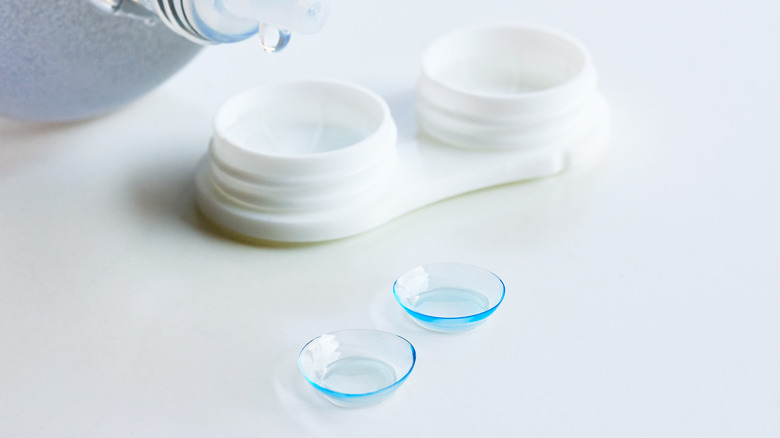You Need To Replace Your Contact Lens Case More Often Than You Think
People who regularly wear contacts have their own way of doing things. They're usually given a walk-through when they get their first pair, but after that, they develop their own habits. The longer they wear contacts, the more ingrained those habits become. Some of these habits, like when someone takes out their contacts each day or the order in which they put them in, don't have much of an impact.
But it turns out that some habits do make an impact — big ones. When it comes to changing out contact cases, the impact can be as severe as increasing a person's risk of eye infection, according to the American Optometric Association (AOA). According to research published in the journal Australian Prescriber in 2018, eye infections can range from simple cases of red eyes to eyes that become swollen or crusty. Each type of infection can impact daily life and functional vision in its own way, and some can permanently impact vision.
Eye infections aren't entirely unavoidable, unfortunately. However, there are ways that contact lens wearers can reduce their risk. One of them that is often overlooked is changing your contact case regularly. The only catch is, most contact wearers don't know how often they should change their contact case.
Contact lens cases should be changed every three months
The American Optometric Association states that contact lens cases should be changed every 3 months at most. This is why most bottles of contact lens solution come with a case inside, so users can change their cases every time they go through a normal-sized bottle of solution.
Three months, at most, might seem too frequent, but the recommendation comes with good reason. A study published in the Journal of Applied Microbiology found that, even with the use of saline solution, contact lens cases are an ideal environment for the growth of something called biofilm. This material allows bacteria to thrive, despite the presence of saline solution. Biofilm on a contact lens case greatly increases a person's chances of developing an eye infection.
Montana State University explains that biofilm begins when bacteria adhere to a surface and begin to reproduce. Plaque is one example of biofilm, though it is a much more visible form than what is found on contact cases. The AOA recommends regularly cleaning contact cases with saline solution, but this will only slow biofilm growth. Cases should still be changed out every 3 months at most to ensure healthy eyes.


